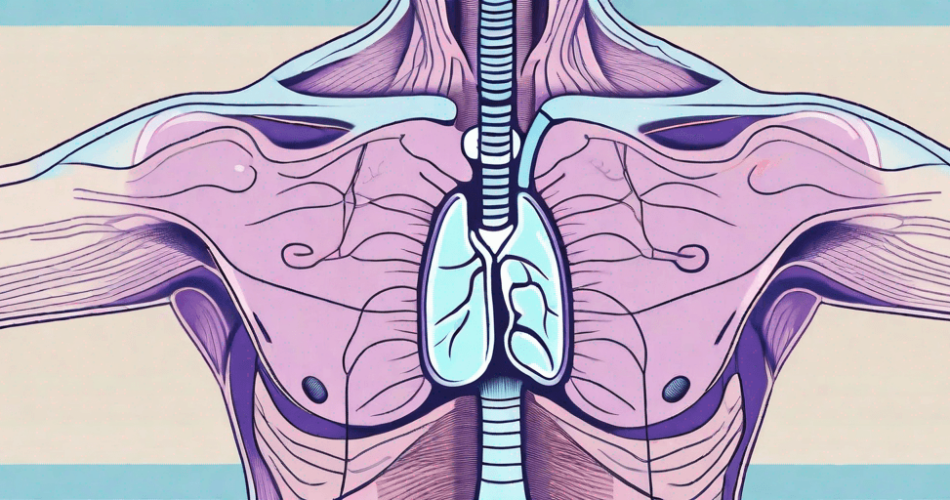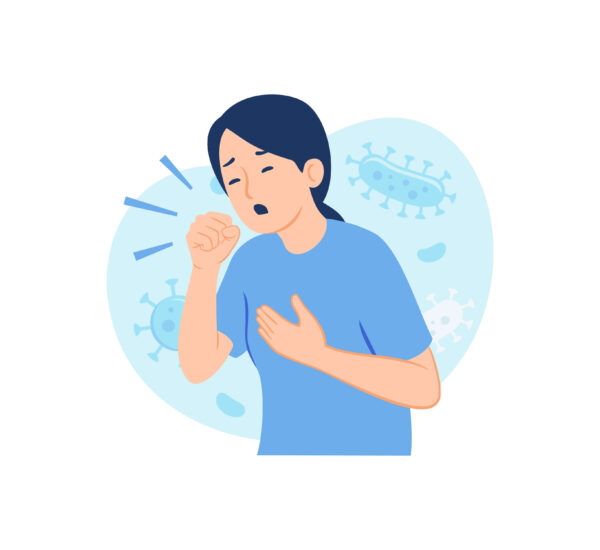Managing respiratory conditions like asthma involves alertness in monitoring one’s health. Doing so, allows patients to be more aware of the symptoms, indicating the progression of the illness. This habit is crucial and should be performed for it signifies being a responsible individual. Thus, promoting early detection and management to improve quality of life.
In this article, we’ll provide the most common asthma symptoms patients must know to better manage their health. Begin combating this illness today!
What is Asthma?

Asthma is a chronic condition that affects the airways, the tubes that carry air into and out of the lungs. When a person with asthma comes into contact with a trigger, such as pollen or pet dander, their airways become inflamed and produce excess mucus. This inflammation and mucus can narrow the airways, making it difficult for air to pass through and causing symptoms such as wheezing, coughing, and chest tightness.
The Basics of Asthma
This chronic condition can vary in severity from mild to severe, and symptoms can come and go. It is important to note that asthma is not a curable condition, but it can be effectively managed with the right treatment and lifestyle changes.
Managing asthma involves a combination of medication and self-care. Medications for asthma include inhalers, which deliver medication directly to the airways. Meanwhile, oral medications are also prescribed to reduce inflammation and control symptoms.
In addition to medication, individuals with asthma are often advised to avoid triggers that can worsen their symptoms. This may involve taking steps to reduce exposure to allergens, such as using dust mite covers on bedding or keeping pets out of the bedroom.
It is also important for individuals with asthma to have an asthma action plan, which is a personalized plan created with their healthcare provider. This plan outlines specific steps to take when symptoms worsen, such as increasing medication or seeking medical attention. Regular check-ups with a healthcare provider are also important for monitoring asthma control and adjusting treatment as needed.
Recognizing Asthma Symptoms in Adults

Recognizing the symptoms of asthma in adults is crucial for early detection and appropriate management. The symptoms of asthma can vary from person to person, but there are some common signs to look out for.
Asthma is a chronic respiratory condition that affects millions of adults worldwide. It is characterized by inflammation and narrowing of the airways, leading to breathing difficulties. While asthma can develop at any age, it often starts in childhood and continues into adulthood. However, there are cases where adults develop asthma for the first time.
Common Symptoms of Asthma
Some of the most common symptoms of asthma in adults may be mild. It can come and go, or they may be more severe and persistent. Let’s check them out below!
Wheezing is often the hallmark symptom of asthma. It occurs when the airways become narrowed and constricted. Thus, causing air to pass through them at a faster rate, resulting in the characteristic whistling sound.
Meanwhile, coughing is another symptom that happens particularly at night or in the early morning. This cough is often persistent and may be accompanied by mucus production.
Chest tightness or discomfort is another symptom that adults with asthma may experience. It can feel like a squeezing sensation in the chest, making it difficult to take deep breaths.
Shortness of breath or a feeling of breathlessness is also common. It happens especially during physical exertion or exposure to triggers such as allergens or irritants.
Less Common Symptoms of Asthma
In addition to the common symptoms mentioned above, some adults with asthma may also experience less common symptoms. It is important to note that not everyone with asthma will experience the same symptoms, and some may have symptoms that are different from those listed here. Let’s check out these other symptoms.
Difficulty sleeping is a less common symptom of asthma but can significantly impact an individual’s quality of life. Coughing and wheezing at night can disrupt sleep patterns, leading to lack of rest or sleep.
Another symptom is fatigue or tiredness which may be present in adults with asthma. As the body works harder to breathe and maintain adequate oxygen levels, it tends to get tired more, affecting the body.
Rapid breathing, also known as tachypnea, may occur during asthma attacks or periods of increased symptoms. This is the body’s attempt to compensate for the reduced airflow and ensure sufficient oxygen supply. Additionally, adults with asthma may be more prone to respiratory infections, such as bronchitis or pneumonia, due to the underlying inflammation and compromised lung function.
It is important for adults who suspect they may have asthma to consult with a healthcare professional for an accurate diagnosis and appropriate management. Asthma can be effectively controlled with the right treatment plan, allowing individuals to lead active and fulfilling lives.
The Difference Between Childhood and Adult-Onset Asthma

Asthma can develop at any age, but it is important to note that there are some differences between childhood-onset asthma and adult-onset asthma.
Childhood-onset asthma is typically diagnosed in individuals before the age of 18. It is often associated with allergies, such as pollen, dust mites, or pet dander. Allergic reactions can trigger inflammation in the airways, leading to asthma symptoms. Children with asthma may experience wheezing, coughing, shortness of breath, and chest tightness.
On the other hand, adult-onset asthma is a term used to describe asthma that develops later in life, typically after the age of 18. Unlike childhood asthma, which is often associated with allergies, adult-onset asthma is more likely to be non-allergic in nature. Non-allergic asthma can be triggered by factors such as respiratory infections, exercise, and exposure to irritants such as smoke or strong odors.
Additionally, adults with asthma may experience hormonal changes that can affect their asthma symptoms. For example, during pregnancy, hormonal fluctuations can lead to changes in asthma control. Some pregnant women may experience an improvement in their asthma symptoms, while others may find their symptoms worsen. Similarly, women going through menopause may also notice changes in their asthma symptoms due to hormonal shifts.
Symptoms Unique to Adult-Onset Asthma
Adult-onset asthma is characterized by symptoms that are unique to this particular group. While individuals with both childhood and adult-onset asthma may experience wheezing, coughing, shortness of breath, and chest tightness, there are some symptoms that are more commonly seen in adults.
Adults with asthma may have difficulty sleeping due to nighttime symptoms. Nocturnal asthma, which refers to asthma symptoms that worsen at night, can disrupt sleep patterns and lead to fatigue during the day. Additionally, adults with asthma may also develop symptoms of gastroesophageal reflux disease (GERD), such as heartburn or acid reflux. This is because the muscles that control airflow in the lungs can also affect the muscles that control the opening and closing of the esophagus.
Why Asthma Symptoms Can Change Over Time
Ssymptoms can vary from person to person and can even change over time for an individual. Several factors can contribute to these changes.
Firstly, changes in the environment can have an impact on asthma symptoms. For example, moving to a new home or workplace with different allergens or irritants can trigger asthma symptoms. Exposure to environmental pollutants, such as air pollution or chemicals, can also worsen asthma symptoms.
Secondly, hormonal changes can play a role in the fluctuation of asthma symptoms. Hormonal levels can vary during different stages of life, such as during pregnancy or menopause. These hormonal fluctuations can affect the airways and lead to changes in asthma control. It is essential for individuals with asthma to be aware of these potential triggers and work closely with their healthcare provider to manage their symptoms effectively.
Lastly, changes in the immune system can also impact asthma symptoms. The immune system plays a crucial role in the body’s response to allergens and irritants. Alterations in the immune system, whether due to aging or other factors, can result in changes in asthma severity and frequency of symptoms.
Diagnosing Asthma

It involves a combination of medical history, physical examination, and lung function tests. This can happen by choosing the suitable professionals for your needs.
For instance, it is ideal to check the nearest hospital to meet your target health check up. It would be best to also check if the doctor you aim to meet with works in that hospital for convenience. That way, you can ensure that immediate care is possible whenever the chronic condition worsens
Once everything is settled, it’s now time to proceed with the check up by scheduling an appointment with them either online or location visit.
Medical History and Physical Examination
During a medical history and physical examination, the healthcare provider will ask about the individual’s symptoms, their frequency and severity, and any factors that may trigger or worsen their symptoms. They will also ask about the individual’s medical history, including any allergies, respiratory conditions, or family history of asthma. The physical examination may involve listening to the individual’s lungs with a stethoscope and checking for signs of inflammation or narrowing in the airways.
Lung Function Tests for Asthma
Lung function tests are a key component of diagnosing asthma in adults. These tests can help assess how well the lungs are functioning and determine whether there is airflow obstruction. The most common lung function test for asthma is called spirometry, which measures how much air a person can breathe in and out and how fast they can exhale. Other tests, such as a peak flow meter or a methacholine challenge test, may also be used to help diagnose asthma.
Remember that tests like these can vary in pricing, depending on which hospital you choose to visit. If you possess an HMO, it would be best to check with your provider if they can cover these tests.
Final Takeaway
Managing this condition starts by being pro-active about one’s health. That involves understanding the symptoms and how it can worsen the current condition. Aside from that, it is also a must to be aware of the difference in symptoms, which makes visiting a professional for check up a wiser choice.
Begin to prioritize your health by allowing early intervention by a pulmonologist. Book an online consultation now at NowServing to receive early diagnosis.



